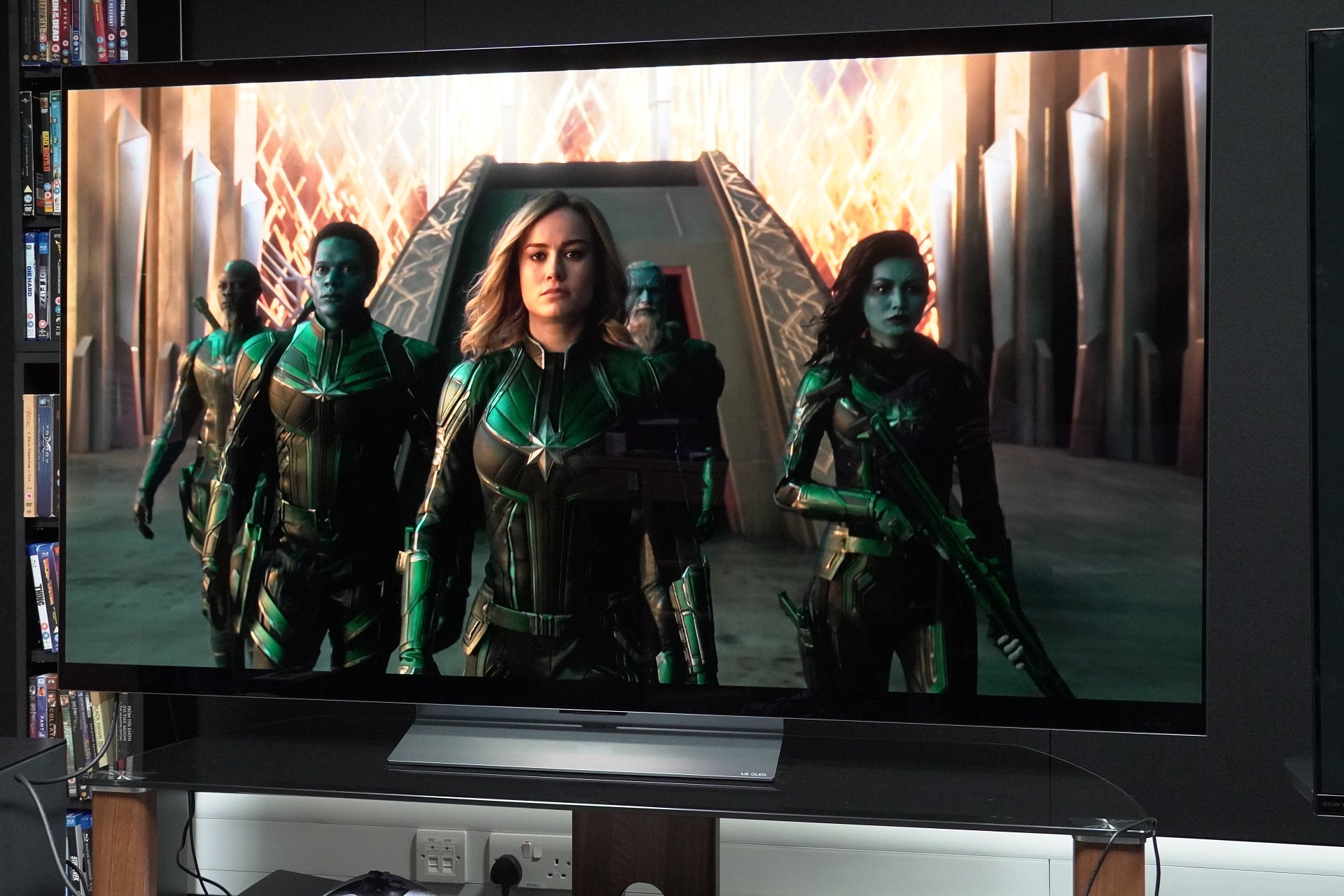LG is one of the most prominent TV brands in the world right now, alongside other major players like Samsung, Sony and Panasonic.
Whether you’re a longtime LG user looking to upgrade your TV or completely new to the brand, you’ve come to the right place. Keep reading to discover all of the best LG TVs reviewed by the team at Trusted Reviews.
There are several factors you need to consider when buying a new TV, including the size and design of the TV, the interface, picture quality and sound quality. It’s also important to look at any additional features, as well as which apps are supported natively. We look at all of these things and more when reviewing a new TV to ensure we get the full picture during our time testing it.
Of course, each TV has its strengths and weaknesses, which is why we’ve also narrowed this guide down further with categories. The list includes the best 4K TV, the best 8K TV, the best value model and the best pick for gaming.
Keep reading to discover all of our favourite LG TVs at a glance, or scroll down further for a summary of each display with pros, cons and links to our full, in-depth reviews.
If you get to the bottom of this guide and are still stuck on which TV to buy, you may want to consider venturing outside of LG and looking at other brands and models. We’d highly recommend checking out our guides to the best TV, best OLED TV, best 4K TV and best 8K TV. We’ve also created guides to the best cheap TV, best TV for PS5, best Panasonic TV and best Samsung TV for those searching for something a bit more specific.
Best LG TVs at a glance
How we test
Every TV we review is put through the same set of tests to gauge its picture performance, usability, and smart features.
Tests are carried out over several days and are done by eye but supported with technical measurements. Testing by eye involves an expert watching a wide range of material to understand and determine a TV’s performance in fields such as brightness, contrast, motion processing, colour handling and screen uniformity.
We’ll consider the design of the TV in terms of build quality, study the spec sheets and see if the TV’s connections are up to spec, as well as playing video and audio content to ensure that the set handles playback as it claims. We also take note whether a product’s compatible formats and features are in line with industry trends or not to gauge whether it’s relevant for you.
Comparison to other related and similarly priced products is also important, to see if it’s missing any vital features and whether it impresses as a whole. After all this, we’ll come to a judgement on how the TV performs as a whole.
If you want to learn more, please visit our detailed page about how we test televisions.
LG OLED65G2
Best 4K LG TV
Pros
- Excellent HDR performance
- Improved motion skills
- Accommodating gaming features
- Slim design
- Wide selection of streaming apps
Cons
- Higher starting price than G1
- Average audio
- Stand is optional extra
The G2 OLED has the same Gallery design as its G1 predecessor, with its rear panel designed to be uniformly flat for wall-mounting. What’s new are the changes made to the OLED EX panel and OLED Evo software that allow it to reach a brighter performance with HDR content.
We measured the HDR performance on a 10% window to be just over 1000 nits, which at the time put OLED65G2 as the brightest LG OLED that we’ve tested, though the new G3 model can hit around 1400 nits with its MLA panel technology.
But it’s not all about brightness for picture quality. Detail levels match the OLED65C2, boasting a sharp image at its 65-inch screen size and a colourful performance with both SDR and HDR content. It’s a TV you’ll want to watch lots of Dolby Vision content on, as films such as The Batman look fantastic on this TV with rich and deep blacks and highlights that add both intensity and depth to the image.
LG’s motion processing has improved across LG’s 2022 TV line-up, much smooth and less distracting than previous years with a performance that’s encroaching on the likes of Sony and Panasonic. When it comes to picture quality, this is among the best you can get from LG’s 4K OLEDs.
For gaming HDMI 2.1 is supported across all HDMI inputs, with ALLM, VRR and 4K/120Hz available, while cloud gaming options have been boosted with additions such as Nvidia GeForce NOW and Utomik. We measured input lag to be 12.9ms, exactly the same result we got from the C2 model and with HDMI VRR you can experience lag at even lower levels.
Where the G2 OLED is weakest with its audio delivery. It sounds restrained in its Dolby Atmos mode, and we found it sounded better with non-Dolby Atmos soundtracks which benefitted from more detail and dynamism. As such, a soundbar purchase is recommended, especially if you’re looking to use this LG OLED within a home cinema setup as it cannot passthrough DTS soundtracks. Prices have come down with the G2 available for less than £2000 at a number of stores.
Reviewer: Kob Monney
Full Review: LG OLED65G2
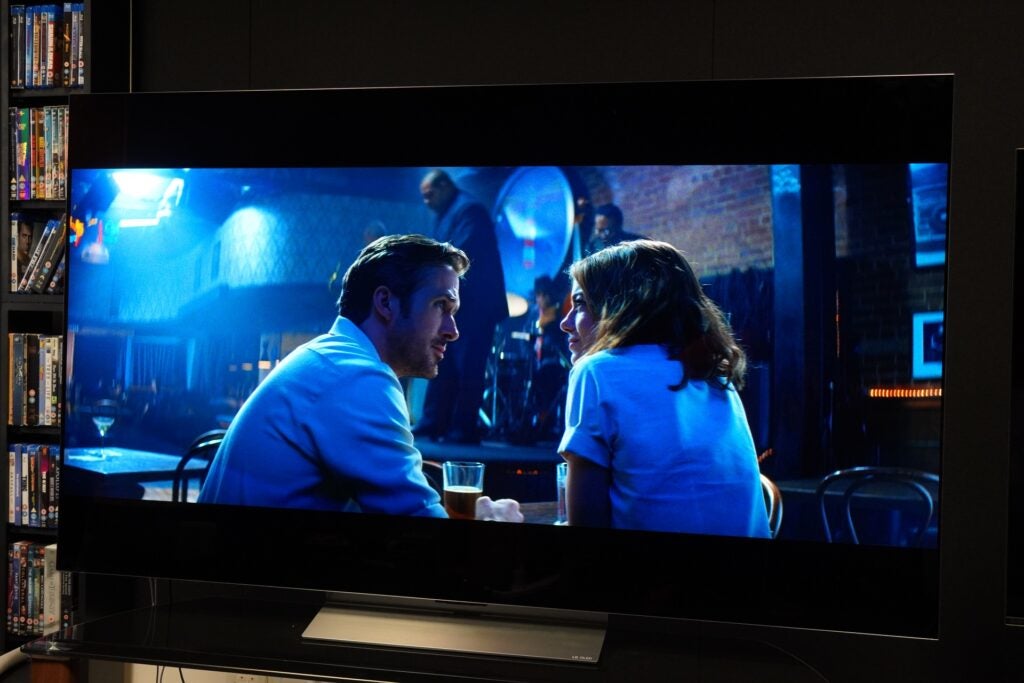
LG OLED65C2
Best value LG TV
Pros
- Great 4K HDR performance
- Improved design
- Comprehensive gaming features
- Better motion skills
Cons
- More expensive than C1 initially was
- So-so Atmos sound
The OLED65C2 improves on the C1 in practically every way. It takes advantage of LG’s OLED Evo panel technology taken from the 2021 G1 series to offer an improved HDR performance.
We found it enhanced the overall picture quality experience with more brightness that brought the best of the TV’s picture when combined with OLED’s inky blacks and the C2 processor’s vibrant colour performance. Like the G1, similar extensive gaming performance made its way over with VRR and ALLM support for a smoother, more responsive experience. Alongside the powers of HDMI 2.1 and 4K at 120Hz, this TV makes gaming an absolute doozy.
The C2 also features Dolby Vision IQ with its Precision Detail feature that increases the detail level and sharpness in an image, arguably making it a better performer with HDR content than Sony’s A80J. Its certainly the best picture quality we’ve seen from a C-series OLED.
The design has changed with a smaller plinth increasing the options of where you can place it. In addition it also weighs less, and cables can now be trailed behind the screen in a more direct fashion, which will be helpful if you’re adding any accessories to enhance your setup such as a soundbar.
When it comes to speakers, the OLED65C2 features some crisp and clear audio, complete with spacious Dolby Atmos for extra immersion. Despite this, we found the audio lacked a bit of heft and power, so like most TVs we’d suggest you consider a separate dedicated audio unit.
The OLED65C3 is now available and while it boasts a few upgrades, the performance isn’t a big leap over the C2. In that context, we’d recommend the OLED65C2 as the better purchase, especially as it’s much more affordable than it was at launch.
Reviewer: Kob Monney
Full Review: LG OLED65C2
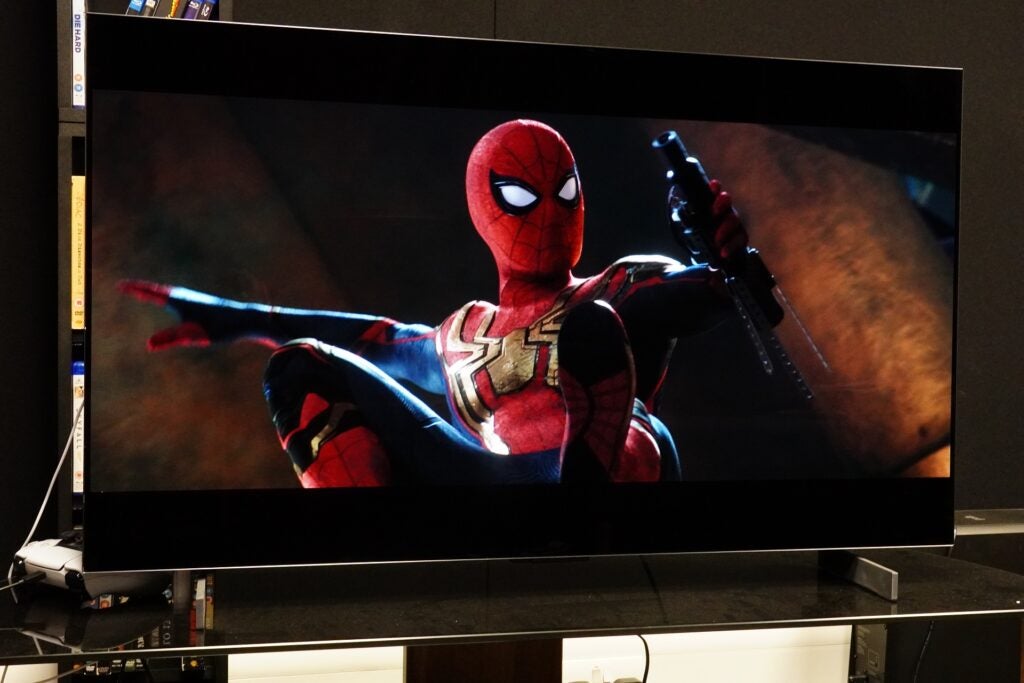
LG OLED42C2
Best LG Gaming TV
Pros
- Natural-looking SDR and HDR images
- Excellent for gaming
- Small size
- Wide selection of apps
- Currently cheaper than other 42-inch OLEDs
Cons
- Rivals arguably offer upgraded picture quality
- Doesn’t comfortably accommodate a soundbar
The OLED42C2 is a pint-sized OLED screen from LG available for less than £1,000. If you don’t have space for a big OLED screen then the 42C2 model is the TV you ought to consider.
It’s also worth considering in a gaming sense too, as its size makes it a good option for bedroom gaming settings. It supports ALLM, VRR and 4K/120Hz across all the HDMI inputs, which makes it an easier choice as to which HDMI port to plug your console in if you have multiple consoles.
We also measured latency at 12.9ms, which is suitably fast enough to offer a slick performance and with HDMI VRR, Nvidia G-Sync and AMD FreeSync Premium Pro supported, lag can be brought down to even lower levels for seamless gaming response.
The OLED42C2 also bears support for Dolby Vision Gaming, which is currently more of use to Xbox Series gamers, as it helps to improve the HDR performance of compatible games, as well as offering a high performance with 4K/120Hz frame rates (where supported) and improved sense of contrast.
We rate this TV very highly as a gaming monitor but it also has a broad range of features for the avid TV and film fan. WebOS supports all the major video streaming apps, while Freeview Play adds the the UK catch-up and on-demand apps to fill out the selection.
The 4K picture is impressively naturalistic, whether we were watching films or playing games, showcasing a good range of colours, as well as excellent levels of sharpness and detail. We measured brightness at around the 750 nit mark, high enough to give a good representation of HDR content and when it comes to upscaling lower quality content the OLED42C2 its pixel density helps smooth over jagged edges and blurriness with 480p content.
When it comes to its audio performance the 42C2 is decent effort but we’d recommend adding a small soundbar to help give it a lift. Bass is punchily described and there’s good levels of detail and sharpness, though with non-Dolby Atmos content we’d opt for the Standard or Cinema modes as the TV can sound sibilant in its AI Sound Pro mode.
Reviewer: Kob Monney
Full Review: LG OLED42C2
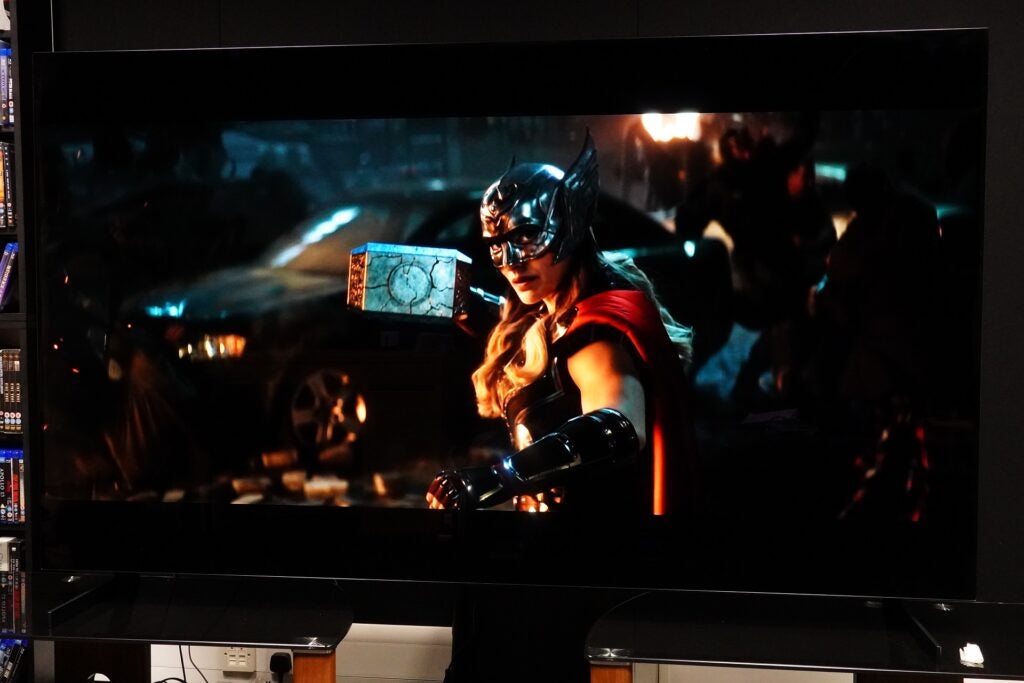
LG OLED77Z2
Best LG 8K TV
Pros
- Looks great with Dolby Vision content
- Minimalist design
- Well-suited for gaming
- Big-screen viewing
Cons
- Seriously expensive
- Not as bright or as sharp an image as you might expect
- Upscaling could be better
- Some apps hidden behind LG account sign-up
8K OLEDs are as rare as a hen’s tooth, with LG the only TV brand that currently makes screens at that resolution. If you are onboard the 8K train, have deep enough pockets and love the design of LG’s Signature range of products, then the OLED77Z2 is here to fulfil your wishes.
As we hinted at it’s not cheap with an asking price at $9999 / £11,999. At this 77-inch size, watching films and TV is an epic viewing experience. The screen size is, in our opinion, the only way the Z2 is better than OLED65G2 or OLED65C2 we’ve tested as picture quality doesn’t feel a big step from those 4K OLEDs.
Peak brightness is around the same as the LG C2 OLED while sharpness and detail levels are better conveyed on the smaller 65-inch G2 model. Upscaling of lower quality sources doesn’t look like it’s been boosted to 8K as a result, but given the sparsity of genuine 8K content then it’s best to settle for good quality 4K content.
In terms of smarts you’ll find much the same level of features as on the other LG TVs featured on this page, with a wide range of apps to enjoy, plenty of connectivity options and a Gaming Shelf that promotes cloud gaming apps such as Nvidia GeForce NOW.
Speaking of gaming, the OLED77Z2 is well covered with the aforementioned cloud gaming apps, support for Dolby Vision gaming (with Xbox Series consoles) as well as 4K/120Hz, 8K/60Hz, VRR and ALLM supported across all HDMI inputs. We measured input lag at 13.5ms, which is not as fast as the 4K OLEDs but if you’re gaming with a console that supports HDMI VRR, you can expect the levels of latency to drop to very low levels.
The one are we’ve felt disappointed by LG’s OLED has been in the sound department but the Z2 is one of the best we’ve heard from a recent LG TV. It’s sound system is clearer, sharper and produces a solid stereo image that’s especially noticeable when we were playing games such as Gran Turismo 7 on the PS5. Bass is punchy rather than weighty but for a flatscreen TV this is a decent effort, though again you should lay aside some cash to partner the TV with an external sound system.
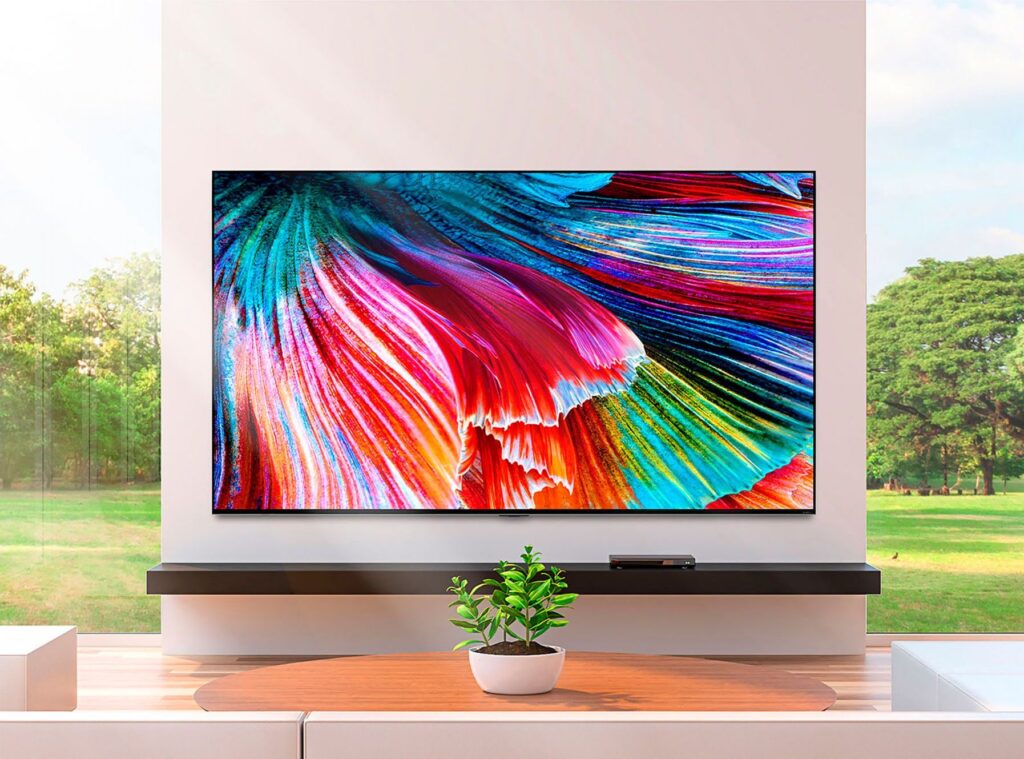
LG 75QNED99
Best LG LCD 8K TV
Pros
- Often stellar picture quality
- Groundbreaking black levels for IPS
- Good sound quality
Cons
- Some backlight issues with the darkest scenes
- No VRR support
- Expensive versus 4K TVs
If 4K simply isn’t enough and you’re after the best picture quality available, the LG 75QNED99 is a stellar choice.
It has an 8K resolution, which is 4x the pixel count of a 4K panel, and whilst there isn’t much in the way of native 8K content at the moment, the motivation for purchasing an 8K TV is down to its powerful upscaling of existing content. We found it worked a treat with the 75QNED99 offering some excellent clarity.
Alongside 8K comes the power of Mini LED backlight technology. This provides more dimming zones for unparalleled contrast from an LCD screen and more precise brightness. It’s not be on par with an OLED screen, but the QNED’s Mini LED screen provides vibrant and rich colours thanks to LG’s NanoCell technology.
There are some handy quality of life features too with regards to the Magic remote which has undergone a redesign. WebOS provides a comprehensive experience for finding content and is useful when searching for a wide variety of media. In addition voice control is effective and LG’s interface recommends content based on your viewing habits which is particularly handy.
Even with HDMI 2.1 support the 75QNED99 isn’t as suited for gamers with no form of variable refresh rate support in sight. There’s no denying this is an expensive display, so it’s only suited for those with money to spare. Nevertheless, LG’s first 8K QNED TV puts the brand’s LCD TVs on the map like never before.
Reviewer: John Archer
Full Review: LG 75QNED99
We also considered…
FAQs
OLED stands for Organic Light Emitting Diode. Each pixel is self-emissive, which means it can produce its own light. This produces high levels of contrast as a pixel that’s ‘on’ can sit next to a pixel that’s ‘off’. This also helps to deliver the deepest black levels in the TV world, wide viewing angles and excellent, vivid contrast levels.
OLEDs are one of the best displays for gaming with LG’s OLEDs supporting every form of Variable Refresh Rate (VRR) for smoother gameplay and faster response times, High Frame Rate (4K/120Hz) and low latency gaming, with input times less than 10ms. Panasonic will be jumping into the gaming fray with their 2021 OLED TV range, too.
UK RRP
USA RRP
EU RRP
CA RRP
AUD RRP
Manufacturer
Screen Size
Size (Dimensions)
Size (Dimensions without stand)
Weight
ASIN
Operating System
Release Date
First Reviewed Date
Model Number
Resolution
HDR
Types of HDR
Refresh Rate TVs
Ports
HDMI (2.1)
Audio (Power output)
Connectivity
Display Technology


